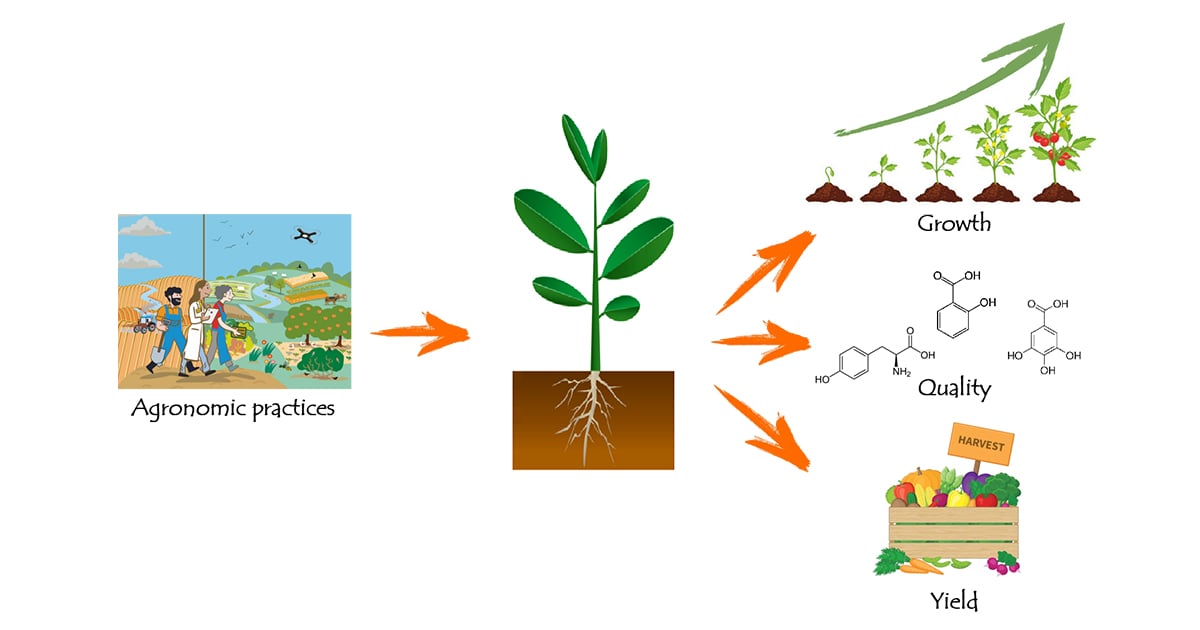Agronomic Practices for Improving Growth, Quality, and Yield of Vegetables
A special issue of Agriculture (ISSN 2077-0472). This special issue belongs to the section "Crop Production".
Deadline for manuscript submissions: 15 January 2025 | Viewed by 2386

Special Issue Editors
Interests: plant nutrition; hydroponics; vegetal production; plant physiology; crop science; aquaponics system; biofertilizer; tilapia; antioxidant activity
Interests: abiotic stress; phytochemicals; anthocyanins; phenolic compounds; antioxidant activity; natural product chemistry; bioactivity; antioxidant assays; polyphenols; food science
Special Issues, Collections and Topics in MDPI journals
Special Issue Information
Dear Colleagues,
The human population is continually expanding. The United Nations estimates that the world population will grow by nearly 4 billion people in 2100, which will exceed 11 billion people. This fact makes it necessary to change the current cultivation paradigm in order to feed a constantly growing population. However, it is not enough to just produce more; the production practices must be sustainable and environmentally friendly.
Alongside the problem of overpopulation is the added, current problem of malnutrition. It has been reported that a large part of the population lacks vitamins or has anemia due to a lack of iron. Therefore, it is necessary to search for new eco-friendly food production techniques that provide foods with better nutritional quality and that allow food to be supplied to the entire population.
Therefore, we are pleased to announce this Special Issue on “Agronomic Practices for Improving Growth, Quality, and Yield of Vegetables”, which will be a compilation of high-level scientific research, reviews, and high-level opinion articles. This Special Issue will address new and sustainable cultivation strategies that allow for improved vegetable production and quality.
Dr. María Carmen Piñero
Dr. Jacinta Collado-González
Guest Editors
Manuscript Submission Information
Manuscripts should be submitted online at www.mdpi.com by registering and logging in to this website. Once you are registered, click here to go to the submission form. Manuscripts can be submitted until the deadline. All submissions that pass pre-check are peer-reviewed. Accepted papers will be published continuously in the journal (as soon as accepted) and will be listed together on the special issue website. Research articles, review articles as well as short communications are invited. For planned papers, a title and short abstract (about 100 words) can be sent to the Editorial Office for announcement on this website.
Submitted manuscripts should not have been published previously, nor be under consideration for publication elsewhere (except conference proceedings papers). All manuscripts are thoroughly refereed through a single-blind peer-review process. A guide for authors and other relevant information for submission of manuscripts is available on the Instructions for Authors page. Agriculture is an international peer-reviewed open access monthly journal published by MDPI.
Please visit the Instructions for Authors page before submitting a manuscript. The Article Processing Charge (APC) for publication in this open access journal is 2600 CHF (Swiss Francs). Submitted papers should be well formatted and use good English. Authors may use MDPI's English editing service prior to publication or during author revisions.
Keywords
- plant growth promoting
- management practices
- elicitors
- shoot growth
- yield
- biomass
- micro and macronutrients
- phytochemicals
- bioactive compounds
Benefits of Publishing in a Special Issue
- Ease of navigation: Grouping papers by topic helps scholars navigate broad scope journals more efficiently.
- Greater discoverability: Special Issues support the reach and impact of scientific research. Articles in Special Issues are more discoverable and cited more frequently.
- Expansion of research network: Special Issues facilitate connections among authors, fostering scientific collaborations.
- External promotion: Articles in Special Issues are often promoted through the journal's social media, increasing their visibility.
- e-Book format: Special Issues with more than 10 articles can be published as dedicated e-books, ensuring wide and rapid dissemination.
Further information on MDPI's Special Issue polices can be found here.






